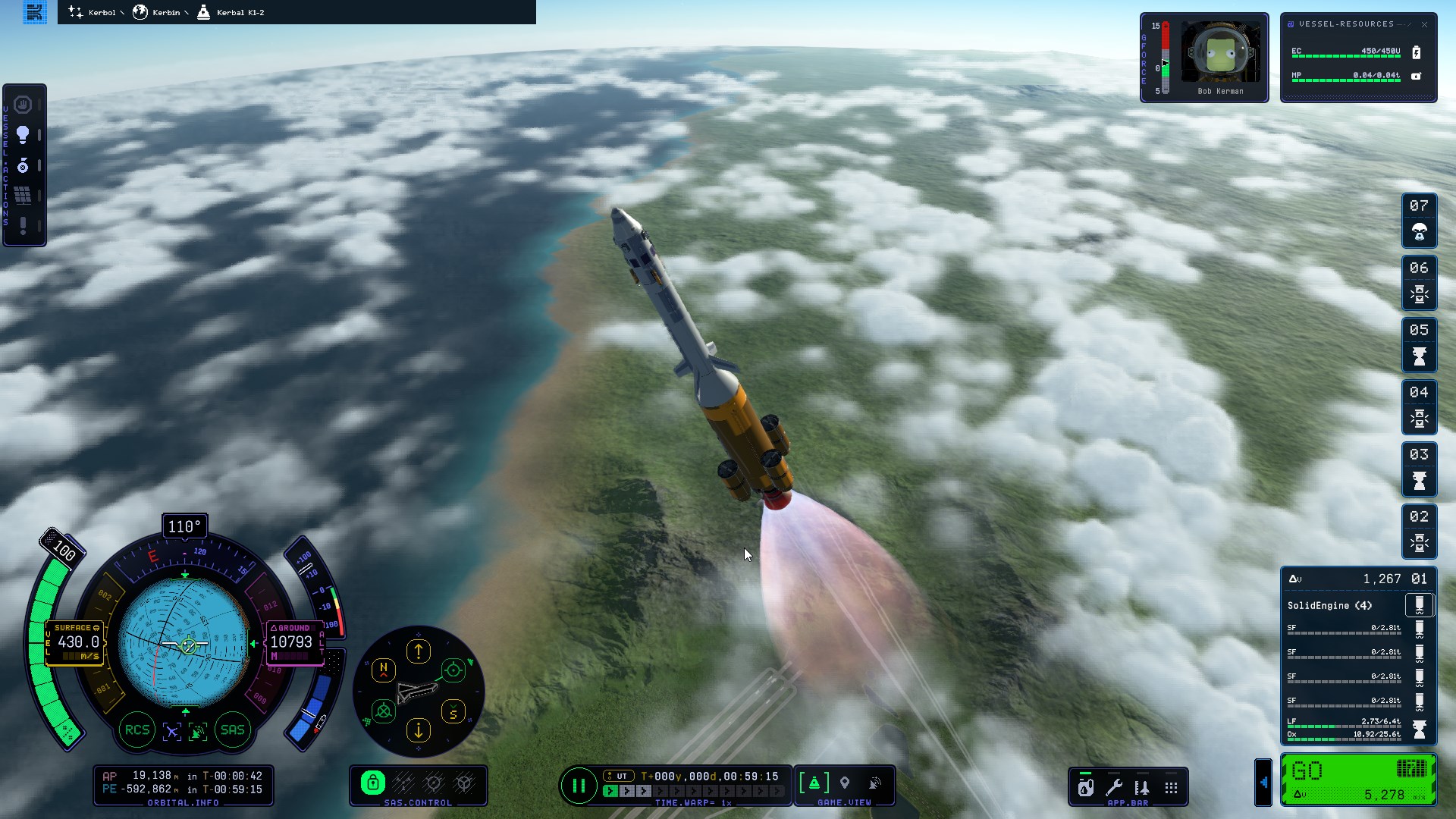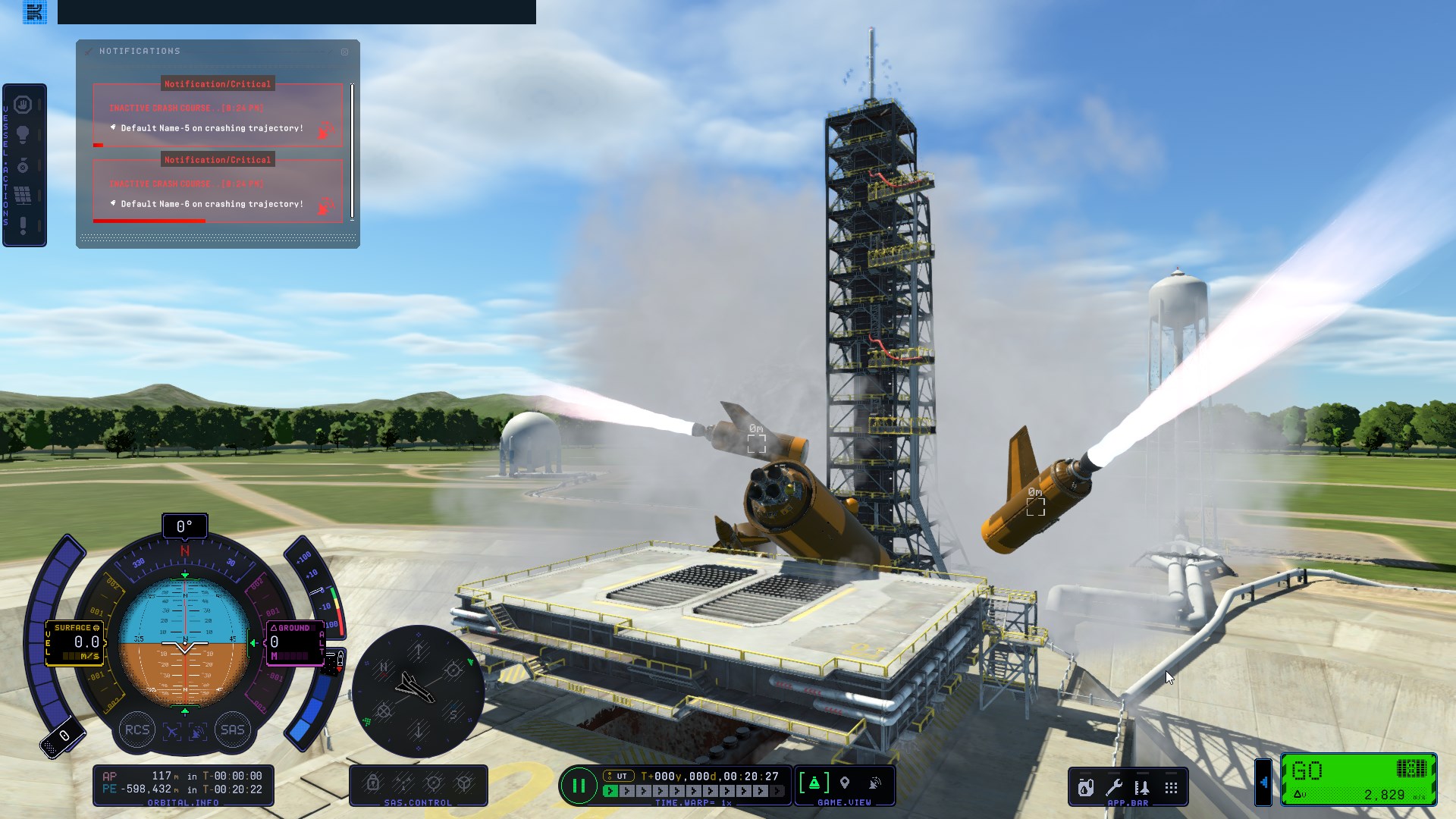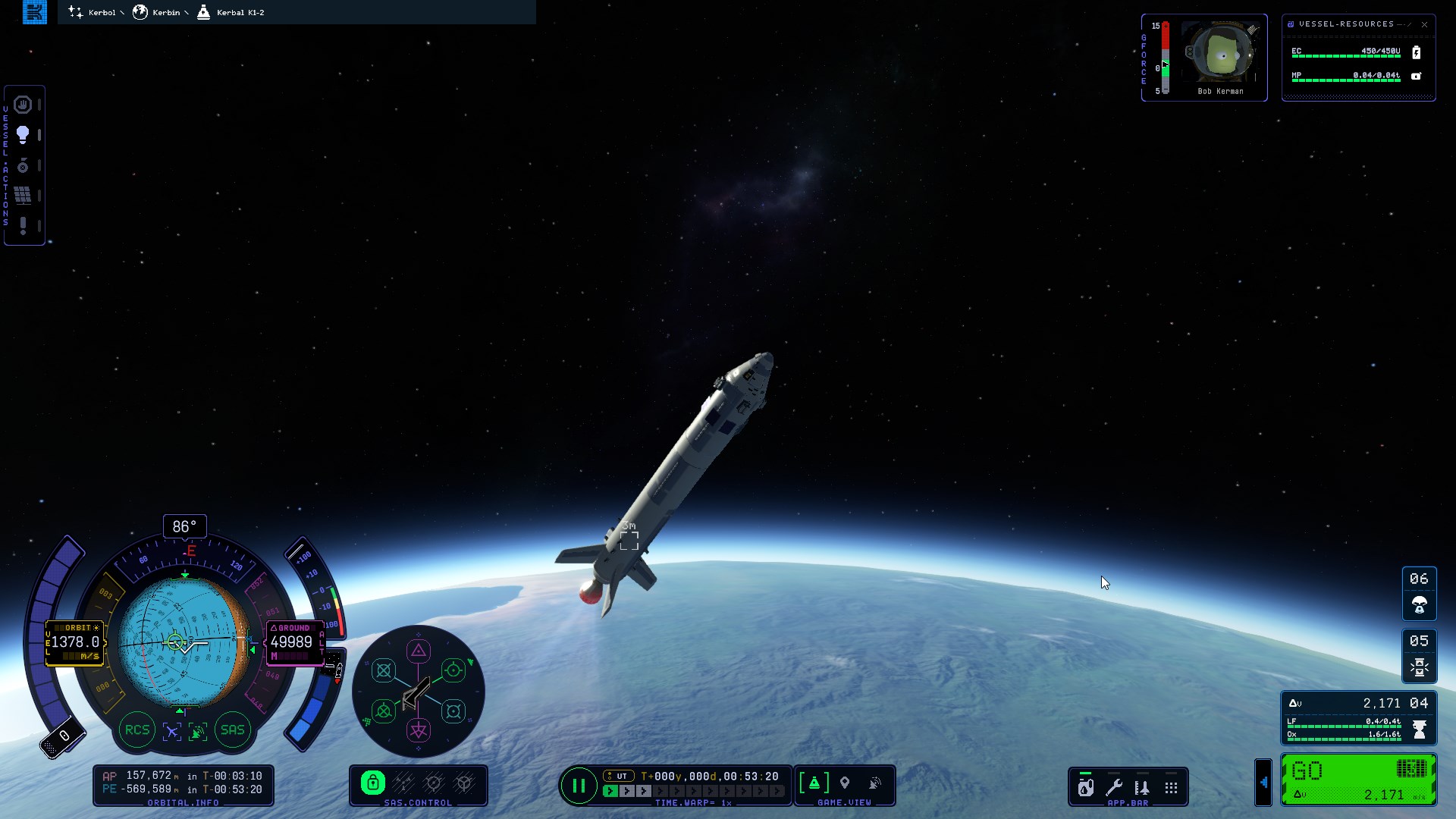Kerbal Space Program 2's early access launch is only for seasoned astronauts
The new rocketry engine is exciting, but KSP2 needs the structure of its missing campaign mode.

I feel compelled to lay my cards on the table here. I'm a history and English major with an interest in the history of rocketry and a poor-to-terrible grasp of practical math, engineering, and physics. I've read half of Gravity’s Rainbow, seen Royal Space Force: The Wings of Honnêamise, and own The Race for Space on vinyl. I'm the lumpenprole rocketry enjoyer, chasing a digital version of that hole that forms just above your stomach when the plane takes off.
Kerbal Space Program 2 gives me that feeling, but at this stage in early access, there’s truly little else on offer for anyone other than diehard kerbonauts.
Kerbal Space Program 2 is heavy on its simulation elements, and at launch light on game modes. There's no budgeting, no tech trees, just a gigantic list of parts broken down into categories. As a casual KSP1 player who got quite good at satellite launches and one-way trips to the Mun, I naively thought my history with the first game would be more than adequate for jumping straight into rocket construction.
Kerbal Space Program 2's overhauled Vehicle Assembly Building humbled me, as my first aerospace vehicle "Zanzibar 1", a ramshackle hodgepodge of engines, solid fuel boosters, and space plane parts, suffered a catastrophic failure on the launch pad. My first hard lesson in rocketry was on the subject of staging, and an over-eagerness to decouple and ignite the next series of boosters when things weren't going how I wanted saw the Zanzibar's spaceplane module decoupling on the launchpad and tumbling down onto the detached and unspent fuel tanks. I'll need to send flowers to the grieving widow.
Laid low by basic engineering, I decided it was time to hit the training center and get my space legs back. Kerbal Space Program 2's simulation is a lot more in-depth than its predecessor, where it was feasible for any wannabe Goddard to punch through the atmosphere with overwhelming thrust. Here, the balance between thrust, weight, and how those two interact with rocket staging is critical to the success of even the most modest missions.
I'm a little sad to say that my first real takeoff was with a preconstructed tutorial rocket, an elongated cylindrical booster with an in-built RCS module and small control fins on all sides. In classic Kerbal Space program fashion, it's no looker, but gets the job done.

In-atmosphere plane and rocket flights currently feel awkward when using the mouse and keyboard, as the rocket's orientation will always level out based on the craft's center of thrust and mass, respectively. I was disappointed to see a lack of HOTAS support in the input menu, as the twist of a stick and ease of use of a throttle would immediately alleviate any of the minor control issues I had.
Keep up to date with the most important stories and the best deals, as picked by the PC Gamer team.
When things go according to plan launches are breathtaking, hiccups and all. The sputtery belching of the boosters gives way to this cacophonous, desk-rattling roar. New to Kerbal Space Program 2 is a countdown launch, where a Kerbal announcer will count down to zero in gibberish numbers, backed by some whimsical bohemian strings and horns. Whenever I spent any significant amount of time retooling my craft in the Vehicle Assembling Building, I'd typically sit back and watch the whole countdown, anxiously awaiting the moment of lift-off.
KSP veterans will doubtlessly be familiar with the performance issues that come with realistically simulating 3,000 tons of atmosphere-breaking space flight but once your bootleg Soyuz gets into orbit, those performance issues quickly disappear, at least from my early playtime.
What hasn't disappeared in my time with the game are the frequent bugs. I've had random stuttering fits that throw the whole physics engine into disarray, FPS drops to single digits, and I've been hard-locked out of clicking any UI options. Whenever these issues pop up, my flight path is typically altered (and in some cases prematurely ended), as I have no real course of action aside from waiting for the strained game engine to catch up. Still, for all its technical trouble, it's an incredibly impressive near-scale simulation of our own solar system.
Grand beginnings

Kerbal Space Program 2 really sells an atmosphere and mood of unlimited discovery and achievement. The deep blacks and blues of space are eerily beautiful, and watching the atmosphere fall away around you as you rise through the clouds is nothing short of awe-inspiring. As annoying as a lot of the aforementioned issues were, I couldn't stay mad at it—not when I was floating in a sea of stars.
With an elementary understanding of prograde and retrograde thrust in my tool belt, the Zanzibar 1 underwent a dramatic refit. Once I got to grips with it, the Vehicle Assembly Building effectively translated my mental sketches and loose concepts into functional (if not practical) rockets. In this case, a 4-by-4-by-4 steel truss with solar panels and satellite dishes bolted onto each surface, sandwiched between a manned command module and the hull.
The first of my real spaceflights was, in hindsight, a bafflingly inefficient operation. The expedition, as I had planned it, would practically apply the knowledge I gleaned from the tutorial. I would launch, begin my turn eastward at 10,000 feet, ditch the boosters, and full throttle just before I hit the apoapsis (the apex of your flight arc, basically). Once I was 70 kilometers above the surface of Kerbin, I'd detach the satellite, initiate a retrograde thrust with my reserve booster, and hopefully touch down without a hitch.
Turns out you’ll always touch down without issue, as re-entry and heat effects are currently not implemented. As morbid as it sounds, I was pretty keen on burning up some command shuttles on re-entry, and it's a shame to have such a major component of actual space flight be omitted.
The cause of many of my in-flight headaches was a deeply flawed approach to design. The tutorial expertly teaches the hows and whats of rocket flight, but at this stage in early access, Kerbal Space Program 2 really can't explain the whys, leaving new players to meander around its sandbox aimlessly. With no budget restrictions, research grant obligations, and a buffet of instantly available rocket parts, the Zanzibar 2 was a melting pot of contrasting design philosophies, a manned satellite delivery platform built in ignorance of the concept of "unmanned launch." Still, we can only launch the rockets we have, and my imaginary private aerospace company was teetering on the edge of an imaginary default line, so the operation had to proceed. As absurd as the design and philosophy underpinning it was, the orbit and payload release went disappointingly smoothly.

With none of the aforementioned pressures and stressors, I found making rockets that don’t explode was actually quite a simple task. Necessity breeds innovation, innovation needs creativity, and creativity requires risk, but with no framework for progression, no budgets, deadlines, or competitors, I found that there was rarely a need to take risks beyond the idle curiosity of seeing what would happen. More than any minor feature from the first game, I miss the campaign.
Without the skeleton of a campaign or progression present, Kerbal Space Program 2 can often feel like being in the middle of an ocean, clinging to a hunk of wood. It's got depth you can drown in, but no easy way to navigate it without the (assumed) support of its community.
For people who just want to get right into the fine details of advanced rocketry with an updated physics engine, Kerbal Space Program 2 will likely satisfy. Amateurs and weekend rocketeers should try the first game’s campaign mode instead.

Nova Smith is a freelance writer based out of Alberta, Canada. Nova's grab bag of non-gaming interests and passions includes Japanese mecha anime, miniature painting, as well as history, literature, and classical music. Nova also moonlights as a bureaucrat and amateur historian.

